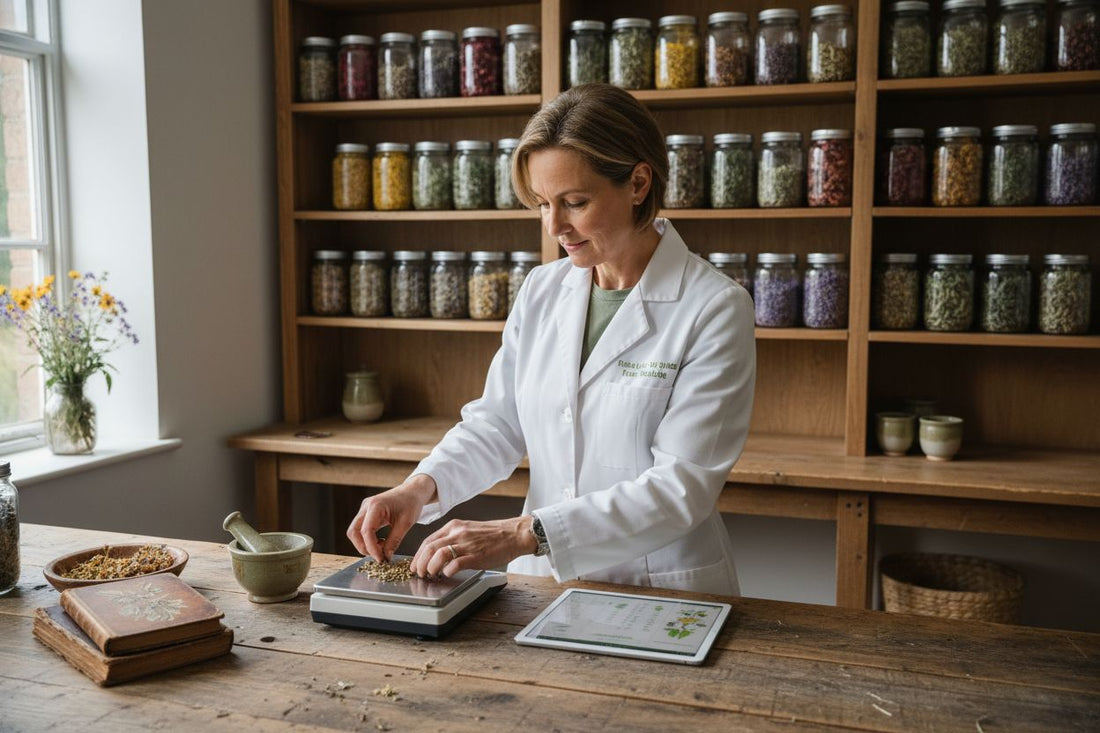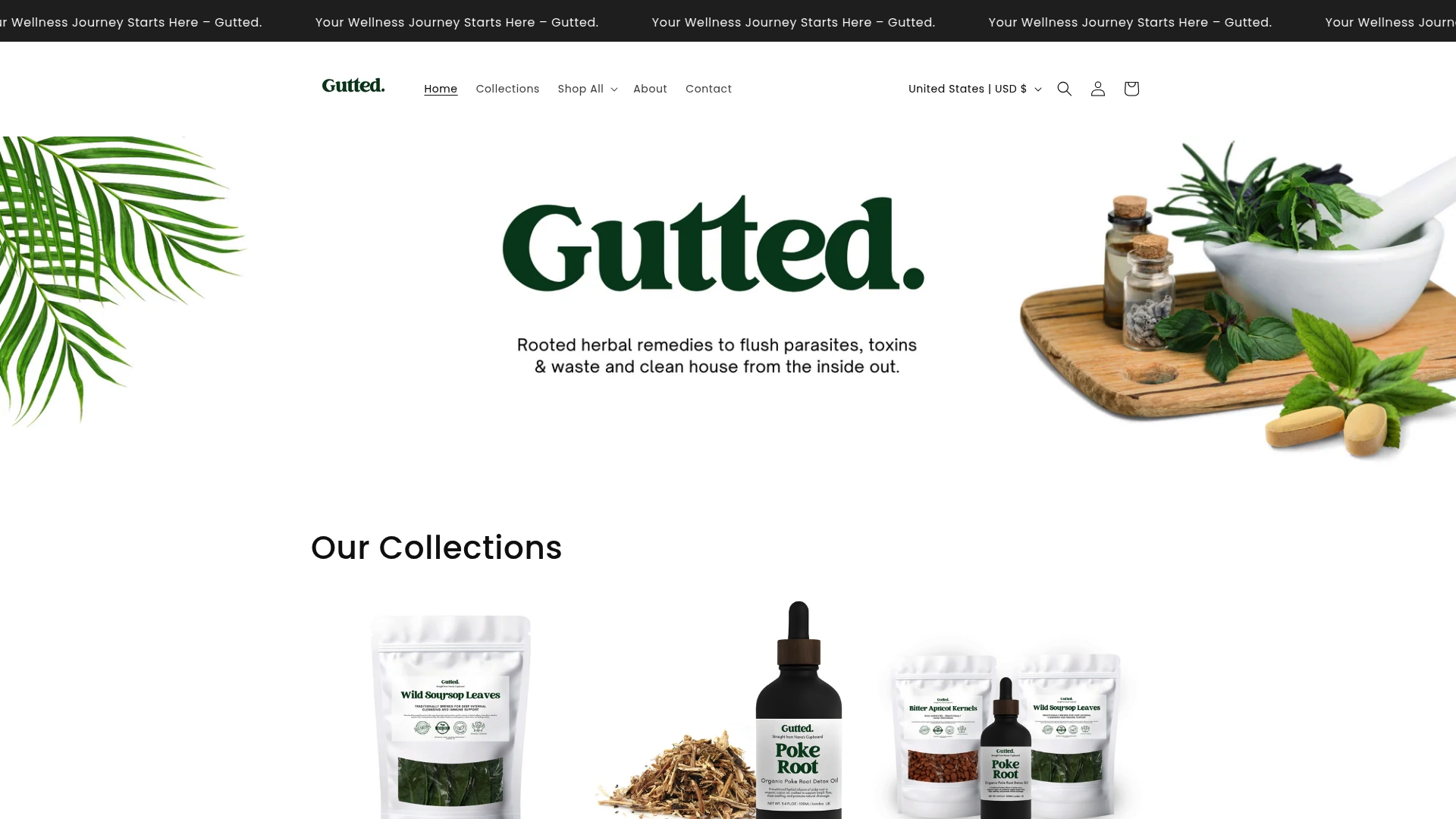
Complete Guide to How Herbalists Formulate Blends
Did you know that nearly 80 percent of the world’s population relies on plant-based medicine for primary healthcare? With a rich history dating back thousands of years, herbal blend formulation offers a thoughtful way to tap into nature’s healing potential. As people search for personalized wellness solutions, understanding how herbalists craft these powerful combinations provides a gateway to deeper, more effective natural remedies that align with individual needs.
Key Takeaways
| Point | Details |
|---|---|
| Herbal Blend Formulation | Involves the strategic combination of multiple herbs for enhanced therapeutic effects. |
| Core Principles | Emphasizes synergy, energetic balancing, and personalization to create effective herbal remedies. |
| Types of Blends | Various preparation methods like decoctions and tinctures cater to different health objectives. |
| Safety and Quality | Rigorous standards for sourcing and testing are essential to ensure the safety and efficacy of herbal products. |
What Is Herbal Blend Formulation?
Herbal blend formulation is an ancient healing art where multiple botanical ingredients are carefully combined to create powerful wellness remedies. Polyherbal formulation involves strategically selecting and mixing herbs that work synergistically to enhance therapeutic potential. According to research in pharmacognosy, this approach allows herbalists to create more complex and nuanced healing preparations compared to single-herb solutions.
At its core, herbal blend formulation follows intricate principles of botanical compatibility and energetic interactions. Herbalists consider multiple factors when designing these complex mixtures:
- Plant Properties: Understanding each herb’s unique medicinal characteristics
- Synergistic Interactions: Identifying how different herbs amplify or complement each other’s healing properties
- Individual Health Needs: Tailoring blends to specific wellness goals
- Extraction Methods: Determining optimal preparation techniques to preserve herbal potency
According to pharmacognosy research, successful herbal formulations require deep understanding of plant chemistry and precise identification of botanical components. Learn more about creating herbal infusions naturally to understand the intricate process behind crafting effective herbal blends that support holistic wellness.
Core Principles of Herbal Blending
Herbal blending is a sophisticated practice that goes far beyond simply mixing plants together. According to traditional herbal wisdom, successful formulation requires understanding complex interactions between botanical ingredients. These key principles guide herbalists in creating powerful and balanced wellness remedies that work harmoniously with the body’s natural systems.
According to research on herbal formulation, the core principles revolve around several critical considerations:
- Synergy: Creating combinations where herbs amplify each other’s healing potential
- Energetic Balancing: Understanding the thermal and emotional qualities of each botanical
- Multi-Pathway Targeting: Incorporating herbs that support primary healing goals, provide secondary benefits, and offer overall tonic support
- Personalization: Tailoring blends to individual constitutional needs rather than using generic approaches
Traditional herbal approaches emphasize that effective blending is not a mechanical process but an intuitive art. Each herbal combination must be carefully crafted, considering factors like individual constitution, specific health objectives, and the subtle energetic qualities of different plants. By respecting these nuanced principles, herbalists create complex formulations that support holistic wellness far more effectively than single-herb preparations.
The ultimate goal of herbal blending is creating a sophisticated, balanced remedy that supports the body’s inherent healing intelligence. Discover more about botanical detox strategies that demonstrate how thoughtful herbal combinations can transform wellness approaches.
Types of Blends and Their Purposes
Herbal blends come in diverse forms, each designed to support different aspects of wellness and deliver botanical benefits through unique preparation methods. Traditional healing systems have developed sophisticated approaches to extracting and combining plant medicines, ensuring maximum potency and targeted therapeutic effects.
According to traditional herbal research, key blend types include:
- Decoctions: Concentrated herbal preparations typically used in Traditional Chinese Medicine (TCM) for deep-seated physiological effects
- Infusions: Gentle tea-like preparations using soft plant materials, perfect for soothing nervous system and digestive support
- Tinctures: Potent liquid extracts created through alcohol or glycerin extraction, ideal for concentrated immune and anti-inflammatory support
- Powdered Blends: Finely ground herbal combinations like Ayurvedic Triphala, offering systemic nutritional and cleansing benefits
Traditional herbal tonics represent another fascinating category of blends. As research indicates, these preparations are designed to tone and support specific physiological systems. For instance, raspberry leaf has been traditionally used to support uterine health during pregnancy, demonstrating how carefully crafted herbal combinations can provide nuanced wellness support.
Here’s a comparison of common herbal blend types and their purposes:
| Blend Type | Preparation Method | Typical Uses |
|---|---|---|
| Decoction | Boiled extraction | Deep physiological support |
| Infusion | Hot water steeping | Nervous & digestive comfort |
| Tincture | Alcohol or glycerin extraction | Immune & anti-inflammatory support |
| Powdered Blend | Dried, ground herbs | Nutritional & cleansing benefits |
| Tonic | Specially formulated mixtures | Systemic resilience & vitality |
Discover targeted herbal strategies that showcase how different blend types can be tailored to address specific health objectives, transforming botanical ingredients into powerful wellness tools.
Step-By-Step Herbal Formulation Process
Herbal formulation is a meticulous craft that requires deep botanical knowledge, intuitive understanding, and systematic approach. Herbalists follow a carefully structured process to create potent and purposeful herbal blends that support holistic wellness.
The herbal formulation journey typically unfolds through these essential stages:
- Assessment and Intention
- Identify specific wellness goals
- Understand individual health constitution
- Determine primary and secondary therapeutic objectives
- Ingredient Selection
- Research herbs with complementary properties
- Evaluate energetic qualities of potential botanical ingredients
- Consider potential interactions and synergistic effects
- Precise Measurement and Proportion
- Calculate optimal ratios of primary, supporting, and tonic herbs
- Balance active constituents for maximum efficacy
- Ensure harmonious blend of herbal energetics
Exploring botanical detox strategies reveals how thoughtful ingredient selection transforms individual herbs into powerful healing combinations. Each step requires not just technical knowledge, but an intuitive understanding of plant medicine.
![]()

Discover targeted herbal techniques that demonstrate how herbalists craft intricate blends capable of supporting the body’s natural healing intelligence. The art of herbal formulation goes beyond simple mixing—it’s about creating a sophisticated botanical symphony that resonates with individual wellness needs.
Safety, Sourcing, and Quality Considerations
Herbal medicine demands rigorous attention to safety and quality, far beyond simply selecting beautiful botanicals. The complexity of plant-based remedies requires a meticulous approach to sourcing, processing, and verifying the integrity of each botanical ingredient used in wellness preparations.
Research highlights critical quality considerations for herbal products:
- Raw Material Verification: Precisely identifying plant species, harvest location, and cultivation methods
- Contamination Prevention: Screening for potential pesticides, heavy metals, and microbial risks
- Potency Testing: Ensuring consistent levels of active therapeutic compounds
- Sustainable Sourcing: Selecting suppliers committed to ethical and environmentally responsible harvesting
Good Manufacturing Practices (GMP) play a crucial role in herbal product safety. These standards require comprehensive quality-control processes including:
- Detailed supplier qualification protocols
- Rigorous facility hygiene management
- Standardized operating procedures
- Comprehensive documentation
- Regular quality testing and stability assessments
Explore our botanical detox strategies to understand how professional herbalists navigate these complex quality considerations. Discover our approach to natural herbal wellness and the stringent standards that transform raw botanicals into trusted healing remedies.
Common Mistakes in Herbal Blend Creation
Herbal blending is an intricate art that demands precision, intuition, and deep botanical understanding. Even experienced practitioners can fall into common traps that compromise the effectiveness and safety of their herbal preparations. Understanding these potential pitfalls is crucial for creating truly transformative botanical remedies.
The most fundamental mistakes in herbal blend creation include:
- Ignoring Energetic Interactions: Randomly mixing herbs without considering their complementary or conflicting energetic qualities
- Overlooking Individual Constitutions: Creating one-size-fits-all blends instead of personalizing formulations
- Improper Dosage Calculations: Failing to balance herb ratios for maximum therapeutic potential
- Neglecting Extraction Methods: Using inappropriate preparation techniques that diminish herbal potency
Research highlights that the core error in herbal formulation is disregarding the subtle synergies between botanical ingredients. Each herb carries unique properties that can either amplify or neutralize another’s therapeutic effects. Thoughtless combination can not only reduce a blend’s effectiveness but potentially create unintended physiological responses.
Explore our botanical detox strategies to understand the nuanced approach required in herbal blend creation. Discover targeted herbal techniques that transform potential mistakes into opportunities for creating powerful, harmonious botanical remedies.
Experience the Art of True Herbal Formulation with Gutted™
Are you searching for herbal blends that truly honour the detailed craft and wisdom explored in the “Complete Guide to How Herbalists Formulate Blends”? Many people struggle to find authentic remedies when tackling challenges such as synergy, botanical compatibility or the safe balance of ingredients. The pain of trying generic or poorly crafted solutions is real. At Gutted™, every blend reflects what you have learned: the power of intentionally selected botanicals, the science of synergy and genuine respect for holistic tradition. Discover our Detox Herbs & Capsules collection, designed to amplify your body’s natural intelligence through precise, small-batch herbal formulation.

If you are ready to move beyond ordinary blends and invest in remedies that mirror the dedication and principles discussed in the article, now is the time. Explore our Wellness Kits & Bundles or learn more about our process at Gutted™ and find the solution that matches your personal path to lasting wellness.
Frequently Asked Questions
What is herbal blend formulation?
Herbal blend formulation is an ancient healing practice where multiple botanical ingredients are combined to create wellness remedies that work synergistically to enhance therapeutic potential.
What are the key principles of herbal blending?
The key principles of herbal blending include synergy, energetic balancing, multi-pathway targeting, and personalization, ensuring blends are tailored to individual health needs.
What are the common types of herbal blends?
Common types of herbal blends include decoctions, infusions, tinctures, powdered blends, and tonics, each with different preparation methods and therapeutic uses.
What common mistakes should be avoided in herbal blend creation?
Common mistakes in herbal blend creation include ignoring energetic interactions, overlooking individual constitutions, improper dosage calculations, and neglecting appropriate extraction methods.
